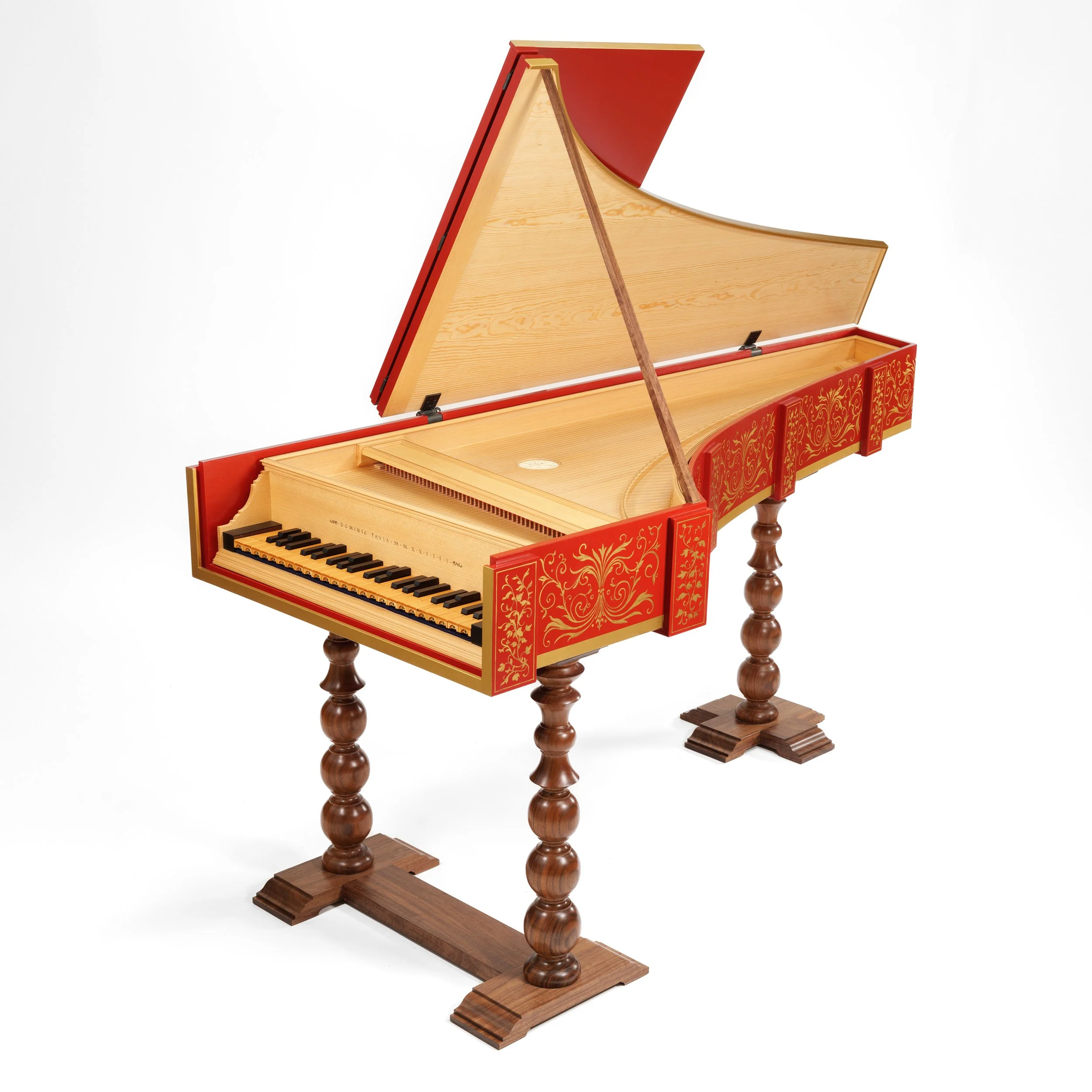Harpsichords
During the day I spend my time building harpsichords in Berkeley, California for John Phillips Harpsichords, but in my spare time I also build instruments for myself. The instruments I have built rely heavily on the vast knowledge learned through restorations that I have both taken part in and also before my employment.
Instruments
Opus 1 after
1635 Ioannes Ruckers (2021)
Petite ravalement Flemish single harpsichord. 2x8’ and 1x4’ disposition with a stand Paris c.1700
Opus 2 recreation
1566 Dominicus Pisaurensis (2024)
Recreation of a now-lost 16th century Venetian harpsichord. 2x8’ disposition with 50 notes including split sharps.

How I build harpsichords
My goal is to capture the spirit of the original builders in order to create new instruments full of life and vibrancy.
The original harpsichord builders of the 16th- through 18th-centuries had generations of techniques, traditions, and wisdom handed down to them from their predecessors. Sadly most of this knowledge was lost with the rise of the piano, when the harpsichord fell out of fashion and went through a long century of disuse. It is my goal to continue rediscovering these lost secrets and techniques to continue to push the boundaries of harpsichords made today.
Since no original instrument is sufficiently preserved after hundreds of years to tell all its secrets about what the instrument was supposed to have been when new, it is up to us to try to understand and decode the information hidden within. Every piece of wood, joint, tool mark, and decision leaves clues to the overall engineering, aesthetic, and, most importantly, musical philosophy. The better one can understand the original builder’s priorities and methods, the better one can prioritize one’s own building to make a compelling musical instrument in the chosen style. In trying to recreate small details, whether inherent within the plan or through surviving tool marks, I often find that the act of doing reveals a deeper understanding of the instruments we are trying to create. The better one understands and embraces these small details the more responsive and well suited the instrument can be to playing the music of its era.
However, every good historian must be cognizant of getting lost in the details. The harpsichord builder must also be wary of building sinnlose kopie (pointless copies), a term put best by harpsichord pioneer Martin Skowronek, where one gets sidetracked by focusing on the wrong details or unrelated tangents. How each judgement call is made differentiates all modern-day harpsichords from one another, and it is the builder’s ability to navigate these layers of details that determines the final quality of the instruments.
What does this mean for the player?
A well-built new harpsichord captures the details and spirit of the instruments of the period. They should be able to teach a player just as much about the music as playing on one of the exceedingly rare, expensive, and impractical surviving antique instruments.
Players who are attuned to these nuances will discover an instrument that effortlessly magnifies the music your fingers coax from the keys.
A note on modern building methods
People often ask whether modern machinery, especially those controlled by computers like CNC machines, would speed up or simplify the building of an instrument. The truth of the matter is that newer is not always better.
Machines excel at mass production and are therefore not always the easiest or fastest way to accomplish a task when not making parts in large batches. Since harpsichords (and by extension all pre-industrial objects) were designed to be built by hand, the natural variation in materials and build process creates some level of variability that modern machinery struggles to account for.
This is not to say that machines don’t have a place in harpsichord building — after all keyboard makers have a storied history of being at the forefront of industrialization, mechanization, and scientific discovery — just that old tools and techniques often work better and more efficiently than we give them credit for.
A well-sharpened hand plane and carefully constructed wooden jigs can work to tolerances rivaling the most well-built modern woodworking machines — while almost always leaving a better surface finish in the process.
Modern power tools, however, are indispensable for flattening and dimensioning stock. A modern 5-hp cast-iron jointer can flatten an 8-foot long board orders of magnitude faster than even the most motivated and well fed apprentice.
I heard someone once state: I sharpen my planes and chisels to a mirror finish at 16,000 grit, and despite all these centuries of “progress,” often that is still the best tool for the job.



